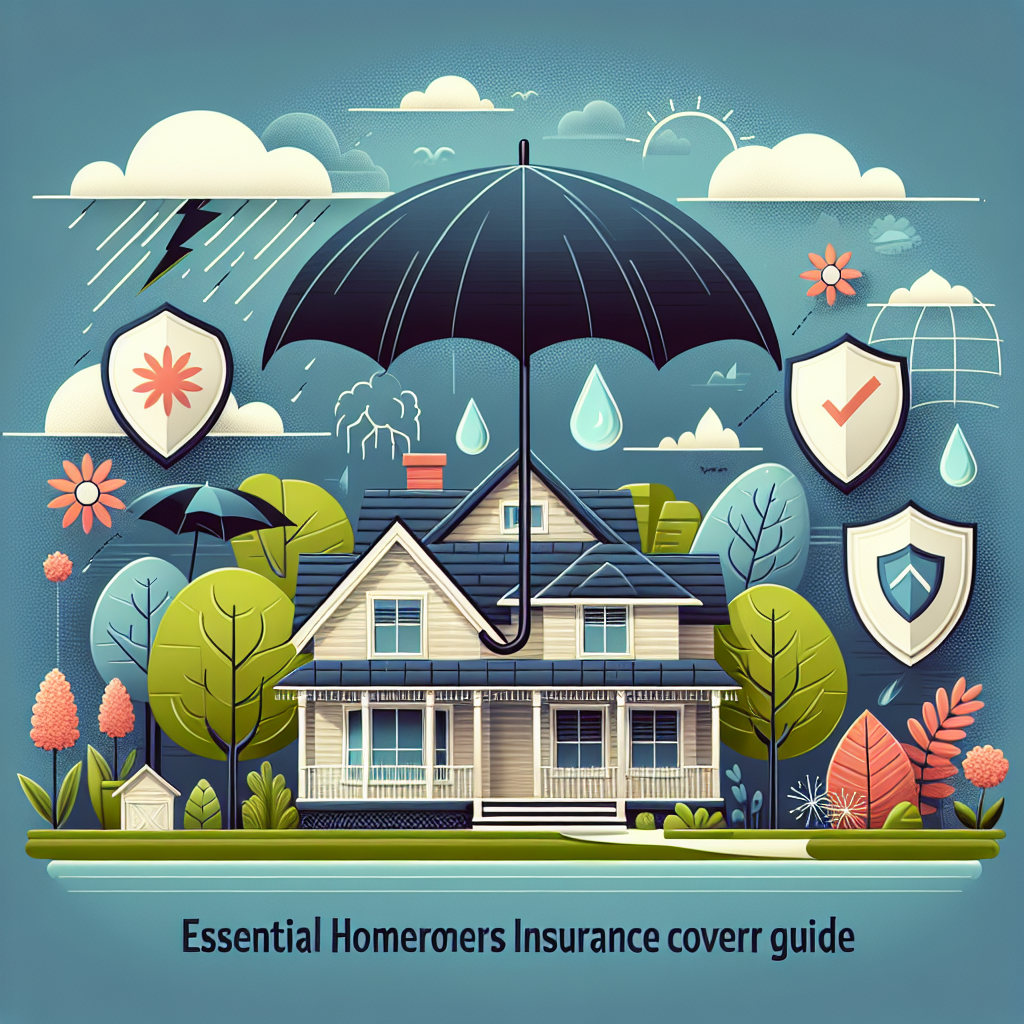Filed under Home Insurance on
Essential Homeowners Insurance Coverage Guide

Owning a home is not just a monumental personal achievement but also a significant financial investment. Protecting this investment is essential, and homeowners insurance is a crucial part of that protection. This comprehensive guide will delve into the fundamental aspects of homeowners insurance coverage, aiming to equip you with the knowledge needed to make informed decisions. Keep reading to understand the nuances of homeowners insurance, the types of coverage available, and tips for choosing the right policy.
Understanding Homeowners Insurance
Homeowners insurance is a form of property insurance that covers losses and damages to an individual's home, along with its furnishings and other assets in the home. It also provides liability coverage against accidents in the home or on the property. Typically, a homeowners insurance policy is a combination of different coverages that may vary based on the house's location, the insurer's offerings, and the homeowner's specific needs.
Why Homeowners Insurance is Essential
Many financial institutions require homeowners insurance before providing loans to homebuyers. Beyond this requirement, homeowners insurance is vital because it significantly reduces the financial risks involved with owning property. Damages from unforeseen events such as natural disasters, theft, or accidents can lead to substantial financial burdens without insurance.
Types of Homeowners Insurance Coverage
Understanding the different types of homeowners insurance coverage can help you choose the right policy. Below are the basic types typically included in a standard policy.
Dwelling Protection
Dwelling protection covers the physical structure of the home. This includes the house's frame, walls, roof, and any attached structures like garages or decks. In the event of a covered peril, such as fire or storms, dwelling protection can help pay for the repairs or rebuilding of the home.
Other Structures Coverage
This type of coverage extends to structures not directly attached to the home, like sheds, fences, and detached garages. Like dwelling protection, it helps cover repair or replacement costs due to covered incidents.
Personal Property Coverage
Personal property coverage helps protect your belongings within the home, like furniture, electronics, and clothing. Should your possessions be stolen or damaged due to a covered peril, this type of coverage can assist in their replacement.
Loss of Use Coverage
If your home becomes uninhabitable due to a covered risk, loss of use coverage helps pay for additional living expenses. This may include hotel bills, restaurant meals, and other related costs that arise while your house is being repaired or rebuilt.
Liability Coverage
Liability coverage is a vital aspect of homeowners insurance coverage. It protects against legal action resulting from bodily injury or property damage caused by you or a family member. It can help pay for the injured party’s medical bills and possibly legal costs if a lawsuit is filed.
Medical Payments Coverage
Medical payments coverage helps cover medical expenses for guests injured on your property, regardless of fault. Unlike liability coverage, it does not extend to lawsuit-related costs but can quickly settle smaller medical claims.
Factors Affecting Homeowners Insurance Premiums
Several factors influence the cost of homeowners insurance premiums. Understanding these factors can help you anticipate and control your insurance expenses.
Location and Home Value
Your home's location plays a crucial role in determining insurance premiums. Areas prone to natural disasters or high crime rates typically have higher premiums. Furthermore, the market value and the cost to rebuild your home are taken into account.
Coverage Levels
The amount of coverage you choose also affects your premiums. Higher coverage limits can provide better protection but will increase your costs. It's essential to weigh the level of coverage against the potential risks and your financial capacity.
Deductibles
Your deductible is the amount you must pay out of pocket before the insurance policy begins to pay a claim. Opting for higher deductibles generally lowers premiums; however, it increases the amount you’ll pay upfront in the event of a claim.
Home Features and Add-ons
Homes with specific features, like swimming pools or high-end security systems, can affect insurance costs. Pools increase liability risks, while security systems might offer discounts due to reduced theft risks.
Shopping for Homeowners Insurance Coverage
Choosing the right policy involves comparing options and understanding what each insurer offers. Here are some strategies to make the process more manageable:
Assess Your Insurance Needs
Start by assessing the value of your home and personal belongings. Consider potential liability risks and additional coverage needs based on your lifestyle and home features.
Compare Multiple Quotes
Examining multiple quotes gives a clearer picture of what insurers offer for similar coverage. Ensure you compare policies providing the same coverage limits and deductibles to make an informed decision.
Research the Insurer's Reputation
Investigate each insurer's reputation by reading reviews and checking their financial ratings. Reliable insurers consistently provide good customer service and handle claims efficiently.
Inquire About Discounts
Many insurers provide discounts for bundling policies, early renewals, and installing safety features. Inquiring about potential discounts could significantly reduce your premium without sacrificing coverage.
Ensuring Adequate Homeowners Insurance Coverage
Regularly reviewing your homeowners insurance coverage is essential. Life changes—such as home upgrades, property market fluctuations, or purchasing expensive items—can affect the adequacy of your coverage.
Conduct Annual Reviews
Set reminders to review your policy annually. Ensure the dwelling coverage corresponds with the current cost to rebuild and that personal property coverage reflects the updated value of your belongings.
Update for Major Life Changes
Purchasing valuable items or making significant home improvements should trigger an immediate update to your policy. Ensure these changes are reflected to maintain sufficient protection.
Conclusion
Understanding and securing the appropriate homeowners insurance coverage is pivotal for safeguarding one of your most valuable assets. By being aware of the various components involved, along with the factors affecting premiums and strategies for selecting the right policy, you can confidently navigate the homeowners insurance landscape. Remember to review and adjust your policy regularly to ensure that your coverage keeps pace with life's changes, ensuring peace of mind and financial security.





